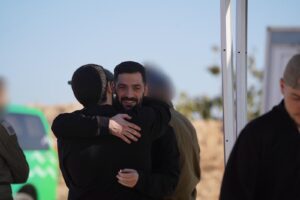
The old cliché, “pictures paint a thousand words,” seemed to reverberate in my mind as I gazed at the very vivid lifestyle shots of some people I didn’t know live in my own homeland.
The pictures I was looking at were but a select few of those that will be showcased in a rare exhibit at the Old Senate Hall of the National Museum starting August 30, 2017 until February 2018.
Personally, I am awestruck and humbled to find an elite white man taking a keen interest in documenting one of the country’s remaining groups of indigenous peoples, Tau’t Batu or People of the Rock, in the Singnapan Valley in Palawan.
The “white man” is renowned French photographer Pierre de Vallombreuse. Judging by the few pictures I saw, he not only captured these indigenous people with the lens of his camera, but he also saw them through the lens of his heart, as he laughed at their jokes and lived with them for three and a half years.

His goal? “To share my encounters with them, to advocate the diversity of cultures, to respect differences, to provide evidence of aggressions and injustices perpetrated against them, to show their evolution and adaptation in coping with changes that disrupt their lifestyle,” he says.
Such “simple ideas and principles” did not grow overnight. Rather, they are a product of a childhood inspiration and lifelong commitment to knowing humanity in a different light.
It was Joseph Kessel, a close friend of Pierre’s parents, who inspired him to be an observer of his times.
In 1984, Pierre entered the École nationale supérieure des arts décoratifs in Paris with the desire of pursuing a career as a cartoonist. However, a trip to Borneo the following year changed the course of his life. It was there that he discovered the Punans, one of the last nomads of the forests and among whom he lived for a time.

From a sedentary artist, he decided to become a nomadic witness of his times, and photography became his mode of expression. While still a student at the Arts décoratifs of Paris, he spent long trips to the jungles of the Philippines with the Pala’wan people. He spent nearly 3 years with them. The first part of his work on the Pala’wan people was presented at the prestigious photographic festival, Les Rencontres Internationales de la Photographie d’Arles. Not long after, he became the secretary-general of the Anthropology and Photography Association (University of Paris VII) with Jean Duvignaud, Emmanuel Garrigues, Jean Malaurie and Edgar Morin.
Since then, he has been regularly collaborating with leading international magazines: GEO (France, Russia, Germany, Spain, Korea, Japan), Sciences et Avenir, Le Monde 2, Le Figaro Magazine, Newsweek, El Mundo, El País, and La Stampa.
Between 2007 and 2012, he worked on a project called Hommes Racines (The Roots People). Over five years, he traveled to different parts of the globe to photograph 11 indigenous minorities.
The main purpose of the project is to show the intimate relationship between man and his environment. It is also a testimony of the diversity of lifestyles on this planet, as well as the various kinds of practices and traditional knowledge which take root in each kind of environment. These cultures are the guardians of knowledge, essential for the preservation of biodiversity.
This project aims to make people aware of a “sustainable humanity” whose corollary is the protection of nature. Each time linked to a specific minority, the project emphasizes the various answers to the diverse conditions of life, imposed by nature and history. It is in this context that the concept of “roots” is addressed.

The project Hommes Racines discusses the profound changes affecting our modernity via photographs of completely different existences – on one hand, of people totally rooted in their territory and, on the other, people who have been completely uprooted from their lands. Indigenous peoples are often the first victims of environmental disasters: food shortages, deforestation, global warming, pollution, water conflict, and crucial questions that are far from being a local concern our entire humanity. Since 2007, this project has been featured in 12 exhibitions and numerous publications.
Pierre’s last project in Manila was in March 2016, when he presented the small-scale version of The Valley at the Alliance Française de Manille Total Gallery.


